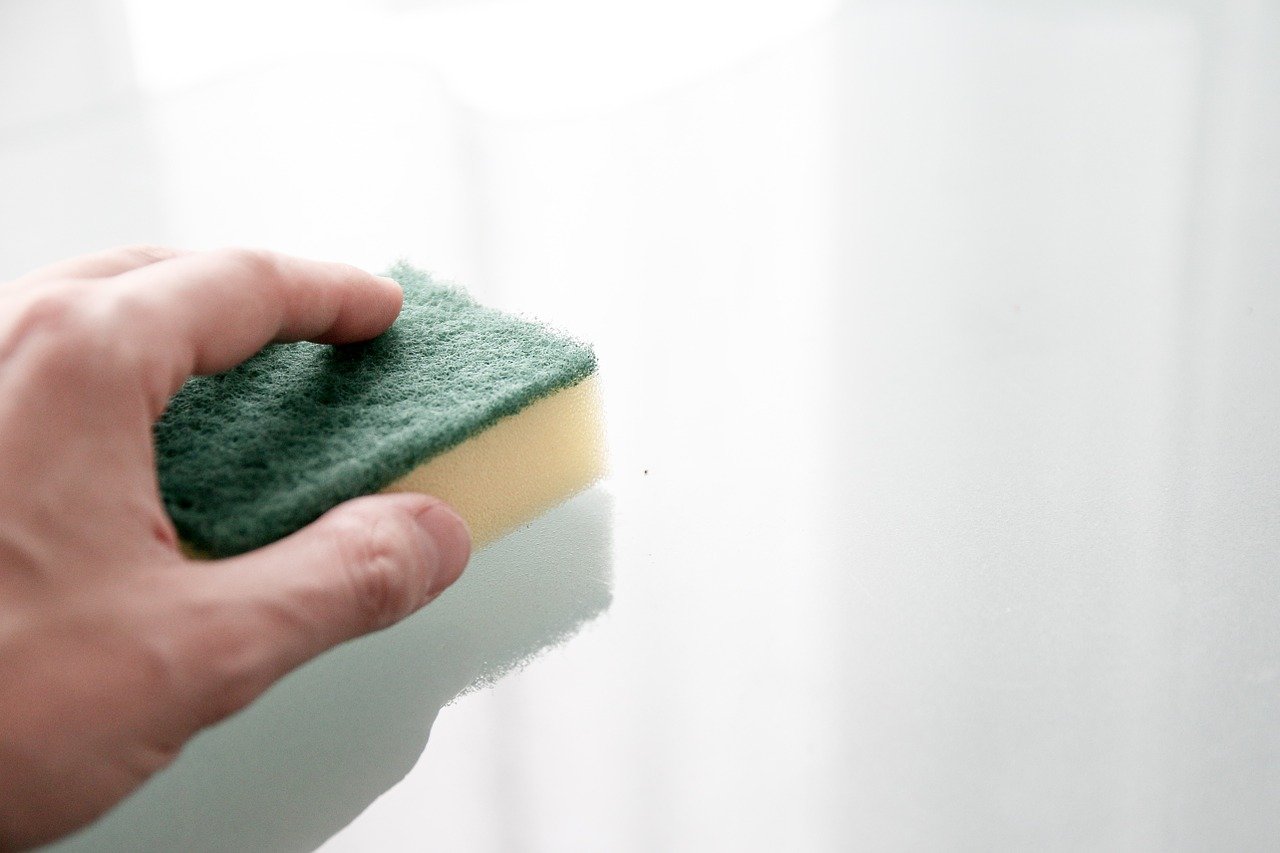Cleaning your walls regularly will help you spend less time scrubbing and repairing surfaces next time you paint. Regardless of the type of paint you have on your walls, be it oil- or water-based paint, the only way to restore and extend the service life of you paint job is to clean painted walls. How can you do that? Here are seven easy ways to help you with your cleaning task.
- Dust your walls. You might not see the dust, but it’s there. Sometimes, wiping or vacuuming your ceilings and walls is the only thing you need to do to restore your paint job to its original condition. You can use electrostatic dusting wipes or a soft brush attachment to remove dust, cobwebs, and loose dirt. Since dust mixed with water or cleaning solutions will leave marks on your walls, making your cleaning task much harder, you should dust your walls even when you intend to wash them.
- Clean fingertips. Cleaning fingertips can be difficult. To remove fingertips from your walls, use a mild
 detergent solution and a nonabrasive pad. For fingertips that won’t come off, apply a mixture made from one gallon of water and a quarter of a cup of baking soda or one cup of ammonia and a half of a cup of vinegar.
detergent solution and a nonabrasive pad. For fingertips that won’t come off, apply a mixture made from one gallon of water and a quarter of a cup of baking soda or one cup of ammonia and a half of a cup of vinegar.
- Eliminate grease and oil stains. Typically, grease and oil stains are difficult to remove, but not impossible. The key to eliminating these types of stains successfully is finding a cleaning product that can cut through the grease. Two effective eco-friendly products recommended by most specialists are the Magic Eraser from Mr. Clean and 305 Kitchen Degreaser from Siege.
- Get rid of mold. In Florida, mold is a common issue that can escalate into a serious health concern. Fortunately, you can get rid of mold and prevent future infestations when you clean painted walls. As with any other wall cleaning task, it’s best to start with a natural product. Mix one cup of vinegar and one cup of borax with one gallon of water, apply the solution to the affected areas, and wait a couple days to see if mold returns. If it does, wash your walls with bleach and water, mixed at a 1:3 ratio, or opt for any of the mold removal products available at home improvement stores.
- Remove water stains and steam marks. To remove water stains, combine one gallon of water, one tablespoon of ammonia, a quarter of a cup of vinegar, and a quarter of a cup of borax in a bucket. Test the solution on an inconspicuous spot before using it. If there’s no colorfastness, apply the solution generously to the stained areas.
- Remove crayon marks. When you clean painted walls, one way to remove crayon marks is to rub them carefully with a cloth dampened with lighter fluid or mineral spirits. If it doesn’t work, professional painters recommend the Magic Eraser solution mentioned above.
- Rinse. After washing your walls, rinse them with clear water. Replace the water as often as necessary to avoid making your walls dirtier.
Additional Tips and Advice
- Dust your walls regularly to prevent dirt buildup.
- Clean stains as soon as you observe them. Fresh stains can be cleaned up quickly and completely with a damp sponge.
- When you clean painted walls, work in small areas, washing from the bottom up. To avoid “wash marks,” take breaks after finishing an entire wall.
- Never use abrasive cleaners or bristle brushes to clean your walls, as they can scratch the surface.
- Consider semi-gloss or gloss paints for future painting projects; they’re easier to clean than flat finishes.






